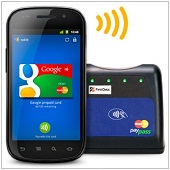Is the iPad Ready for Business?
There is no doubt that the iPad has changed the computing market, specifically the tablet computing segment. With nearly 25 million sold so far, with 9.25 million of that just last quarter alone , more and more of these devices are being bought and used, making it just a matter of time before they start becoming a more common sight in the workplace. For many large companies this may already be happening. Citing numbers released by Apple recently, nearly 86 percent of Fortune 500 companies in the US report deploying or testing the iPad . Is your business thinking of doing the same? Read on to find out how you can use the iPad in your business. The iPad for many is a revolutionary device in that it brings the full power and experience of computing into a form that is easy to hold, easy to transport, and easy to use. Manufactured by Apple, the device uses the same operating system as its earlier iPod Touch and iPhone devices. And just like its smaller brethren it does away with conventional input devices like the mouse or keyboard, instead requiring just the user’s fingers to touch, navigate, and interact with the operating system and installed applications. Key to the success of the device has been the availability of thousands of applications from third-party software vendors – in fact, nearly a hundred thousand of them . These applications range in categories from entertainment, media, education, and even productivity and business. Using these productivity and business applications for the iPad, you can effectively use these devices in the workplace. Here are some specific work scenarios in which you may want to consider the iPad in your business operations: For presentations. Because of its portability, the iPad makes a great device for showing and sharing presentations. Applications like Apple’s Keynote allow you to import and edit PowerPoint presentations. Accessories allow you to connect the device to a monitor or projector. If you’re thinking of doing virtual presentations, there are iPad apps that allow you to do that as well — letting you stream your presentation via the Internet. For Communication and Collaboration. The iPad has built-in applications for emailing, plus more can be added to support audio and even video conferencing. If you want to manage meetings, the iPad’s built-in calendar and address book apps make it a great replacement for a planner, while its larger screen makes it easier to read and manage than your cellphone or smartphone. It has built-in support for third-party mail and calendar applications like Microsoft Exchange, Google Mail, and Calendar. You can also download and use additional applications to help you manage your tasks, monitor projects, share files, post and read stuff in your social networks, and much more. For field assignments. The iPad’s light weight and portability make it a great companion while out on the road. You can install and configure VPN clients to securely connect to your office network when in the field, or use any of the business applications you use in the office — especially cloud-based ones. Again, using the built-in productivity tools you can use the iPad to manage your itinerary while on assignment. For travel. As a travel companion the iPad is unmatched, with a wide breadth of apps for managing flight and hotel booking information, expenses, and more. Use the built-in tools to manage your travel itinerary, and use the communication and collaboration tools to check on progress at the office. During lulls, breaks, or after office hours, easily shift modes and use the iPad as a media viewer or news reader for information and entertainment. Industry-specific apps. There are dozens more business cases in which the iPad can be put to work. For example, as a store or point-of-sale display, or even a point-of-sale device. Companies are using it to replace manuals, and schools are using it to replace stacks of books. There are many more ways the iPad can be used for business. Are you considering using it for your business as well? Do you know of other uses? Let us know!
Save Files Directly to the Cloud
Do you ever wish you could save files you find online directly to a cloud storage service provider? With this handy new free tool called Cloud Save you can. Cloud Save is available for the Google Chrome browser at the Google Chrome webstore. After you install the extension in Google Chrome, you will find a new menu item when you right-click or try to download files in your browser. The menu item allows you to send the file (without having to download to your harddisk) directly to popular web-based services including Dropbox, Google Docs, Facebook, Flickr, Picasa, and more. Simply right-click a file, then decide where you’d like to send it. Related materials: Google Chrome webstore
Find out your IP Address
Sometimes you need to find out your IP address for networking, troubleshooting, gaming, or tech support purposes. There are two IP addresses you may need to consider — your “external” IP address (the IP address the rest of the world sees to locate your computer or network) and your “internal” IP address (which identifies your particular computer in a shared network). Finding your external IP address is easy. If you are connected to the web, just launch your browser and type: “whatismyip”, and your browser should redirect you to the website whatismyip.com which will provide you this information for free. To find out your internal IP address, just go to the Windows command prompt, or go to the Windows Start Menu and click on Run, then type “cmd”. Next, simply type “ipconfig” in the command prompt and then look for the string of numbers right next to “IP Address.”
New Mac Malware Discovered
If you’re one of those people who believe that Macs are impervious to virus attacks, it may be time to rethink that belief: A new threat to Mac systems has been discovered. Called MacDefender, this malware deceives and bullies users to pay for fake anti-virus software. It is a widely held belief that one of the reasons Macs are superior to other systems is because of their ‘invulnerability’ to viruses, malware, and similar threats. All well and good, except for the fact that a recent rogue anti-virus malware that specifically attack Mac OS X systems has been discovered. So much for the ‘Mac = no virus’ myth. Called the ‘MacDefender’ and also known as Mac Security and Mac Protector, this malware tricks users by having them think that their system is under attack. It begins when users visit a malicious website where the program automatically downloads itself to the computer. If you have the “Open safe files after downloading” option selected, it automatically installs itself onto the system. The original installation package is then also automatically deleted. Next, a new menu item appears on the Mac OS X menubar. You’ll see a small orange shield that becomes red, which supposedly means that there are viruses in your system. You’ll then be prompted to “register” – which involves giving out your credit card information – to a website to clean the virus. If you don’t, the malware will then direct your browser to porn sites to ‘encourage’ you to register and pay up. To know more about how MacDefender works, check out this video . While Macs are certainly targeted less than Windows systems, the threat of getting infected by viruses and malware is very real, especially if myths like Macs being impervious to viruses persist. To know more about protecting yourself from threats like these, please contact us so we can draw up a plan to keep your system safe and secure.
Google Ventures into the Retail and Online Shopping Market with Google Wallet
Want to pay for merchandise without whipping out a credit card? Google makes this possible with an electronic internet-based service called Google Wallet. You simply swipe your smartphone over a participating outlet’s cashier, and the transaction is complete. Smartphone technology has grown by leaps and bounds these past few years, and having a smartphone these days is almost synonymous to being online all the time. Software giant Google has decided to tap into this phenomenon with a new service called “Google Wallet”, which enables users to make purchases and payments from their smartphones. Partnering with Mastercard, Macy’s, Subway, American Eagle, Citibank, and Sprint, Google assures users that their e-wallet service is safe. The service requires that smartphones have a special chip that allows the user to simply “tap” or “swipe” the phone at participating stores to pay for merchandise or services. When you swipe your smartphone’s e-wallet, you also earn coupons and points for rewards. The technology is also designed so that the user can turn the chip off when Google Wallet is not being used, making it safe from hackers. If the smartphone is lost, the data can also be wiped remotely. A similar system to Google Wallet has been operational in some countries including Japan for some time now, but its use is limited to only certain areas and stores there. While the concept of Google Wallet has great potential, there are still several limitations to the system as Google continues to look for more partners for the enterprise before its official launch, which is slated for within a month or two.









